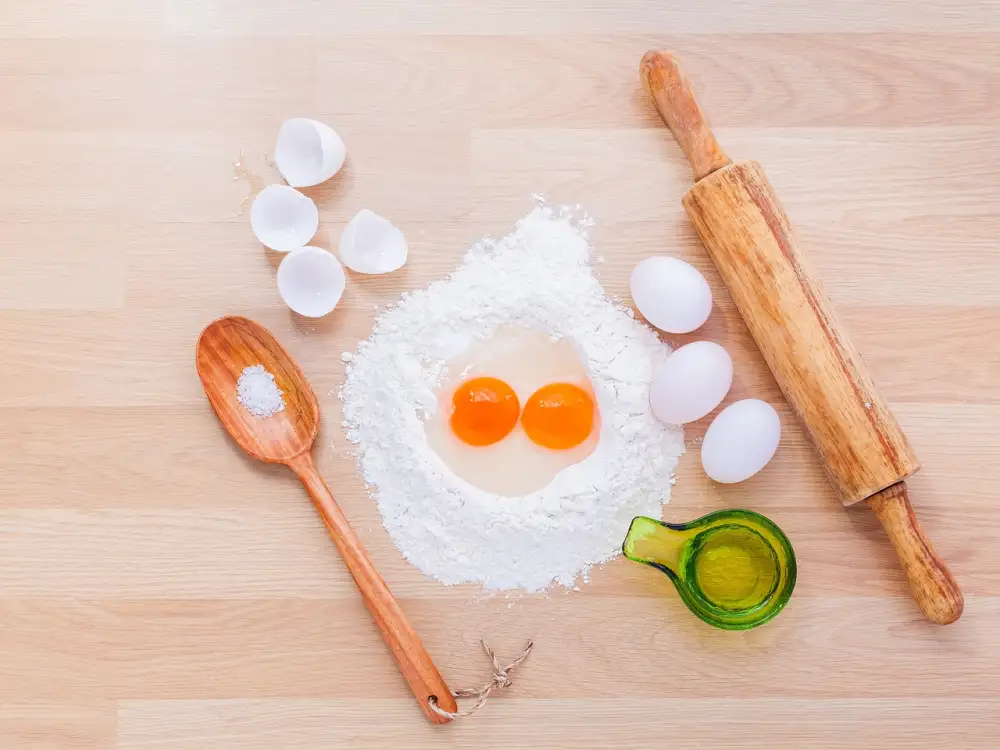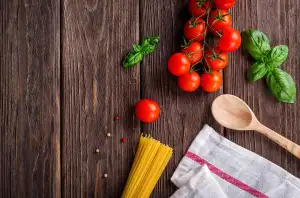Master the Art of Making Pasta: A Step-by-Step Guide to Creating Homemade Delights

Making pasta from scratch is a rewarding and delightful experience that allows you to create delicious dishes right in your own kitchen. The art of making pasta has been passed down through generations, with each family adding their own unique twist to the process. Whether you are a seasoned chef or a beginner in the kitchen, learning how to make homemade pasta will elevate your culinary skills and impress your friends and family.
There is something truly special about the taste and texture of fresh pasta. It has a tender bite and absorbs sauces beautifully, resulting in a mouthwatering dish that will leave you craving for more. While store-bought dried pasta is convenient, nothing compares to the satisfaction of creating your own pasta from scratch.
In this step-by-step guide, we will take you through the process of making homemade pasta, from choosing the right type of pasta to serving it up on your plate. Get ready to roll up your sleeves and embark on a journey that will fill your kitchen with the aroma of freshly cooked pasta and bring joy to every bite. So let's dive in and master the art of making pasta!
Choosing the right pasta type
Choosing the right pasta type is essential for creating a delicious and satisfying dish. With so many options available, it can be overwhelming to know which one to choose. Consider the shape and texture of the pasta, as different types are better suited for specific sauces and dishes. For example, long and thin pasta like spaghetti or linguine pairs well with light, oil-based sauces, while short and tubular shapes like penne or rigatoni are perfect for capturing chunky sauces. Additionally, consider the cooking time of the pasta, as some types require longer cooking times than others. By selecting the right pasta type, you can enhance the flavors of your dish and ensure a memorable dining experience.
Gathering the ingredients
Gathering the ingredients is an essential step in creating delicious homemade pasta. To make the perfect pasta dough, you will need just a few simple ingredients: all-purpose flour, eggs, and salt. It's important to use high-quality flour for the best results. Look for a fine-textured flour with a high protein content, such as semolina or durum wheat flour. Fresh eggs are also crucial as they provide structure and richness to the dough. Lastly, don't forget a pinch of salt to enhance the flavor of your pasta. With these basic ingredients in hand, you're ready to embark on your pasta-making journey!
Preparing the pasta dough
Preparing the pasta dough is a crucial step in the process of making homemade pasta. To begin, gather your ingredients: all-purpose flour, eggs, and a pinch of salt. On a clean surface or in a mixing bowl, create a well with the flour and crack the eggs into it. Add the salt. Using a fork, gradually mix the eggs into the flour until a shaggy dough forms. Then, use your hands to knead the dough for about 5-10 minutes until it becomes smooth and elastic. If the dough feels too dry, add a little water; if it's too sticky, sprinkle some more flour. Once you've achieved the desired consistency, shape the dough into a ball and let it rest for at least 30 minutes before rolling it out. This resting period allows the gluten to relax and makes it easier to roll out later on.
Rolling and cutting the pasta
Rolling and cutting the pasta is where the magic happens. Once you have prepared your pasta dough, it's time to transform it into beautiful shapes. Start by dividing the dough into smaller portions for easier handling. Dust your work surface with flour to prevent sticking. Take one portion of dough and flatten it with a rolling pin or pasta machine. Roll it out as thin as possible, aiming for a thickness of about 1/8 inch. If using a pasta machine, gradually decrease the thickness setting as you roll. Once rolled out, dust the sheet with flour to prevent sticking. Now comes the fun part - cutting the pasta! You can use a sharp knife to cut long strips for fettuccine or pappardelle, or use a pizza cutter or pastry wheel for shorter shapes like farfalle or ravioli squares. For stuffed pastas like ravioli or tortellini, place dollops of filling on one half of the dough sheet, leaving space between each dollop. Fold over the other half of the sheet and press around each filling mound to seal. Use a ravioli cutter or round cookie cutter to cut out individual pieces. As you cut your pasta, transfer it onto a floured surface or drying rack to prevent sticking. Repeat this process with the remaining portions of dough until all your pasta is rolled and cut. Remember that homemade pasta cooks much faster than store-bought varieties, so keep an eye on it while boiling - usually just 2-3 minutes is enough!
Cooking the pasta
Cooking the pasta is a crucial step in achieving the perfect texture and taste. Fill a large pot with water, adding salt to enhance the flavor. Bring the water to a rolling boil before gently adding your homemade pasta. Stir occasionally to prevent sticking and cook for about 2-3 minutes or until al dente. Remember, cooking times may vary depending on the thickness of your pasta. Taste test a strand to ensure it's cooked to your liking. Once done, drain the pasta but reserve some of the cooking water for later use in sauces. Cooking pasta is an art that requires attention and precision, so keep an eye on it throughout the process!
Creating delicious pasta sauces
Creating delicious pasta sauces is an essential part of mastering the art of making pasta. The right sauce can elevate a simple plate of pasta into a culinary masterpiece. There are endless possibilities when it comes to pasta sauces, from classic marinara to creamy alfredo and everything in between.
To create a flavorful sauce, start by sautéing garlic and onions in olive oil until they become fragrant and translucent. This forms the base of many pasta sauces and adds depth of flavor. Next, add your choice of vegetables such as tomatoes, mushrooms, or bell peppers. Cook them down until they soften and release their natural juices.
Once the vegetables are cooked, it's time to add herbs and spices to enhance the flavors. Common choices include basil, oregano, thyme, and red pepper flakes for a hint of heat. Don't forget to season with salt and pepper to taste.
For a creamy sauce, you can incorporate ingredients like heavy cream or grated Parmesan cheese. Stir them into the sauce until they melt and create a rich texture. If you prefer a lighter option, try using Greek yogurt or coconut milk instead.
To make your sauce even more indulgent, consider adding cooked meats such as Italian sausage or grilled chicken. These protein additions will take your pasta dish to the next level.
Lastly, let your sauce simmer on low heat for at least 15-20 minutes to allow all the flavors to meld together beautifully. This will result in a rich and complex sauce that coats every strand of pasta perfectly.
Remember that experimenting with different ingredients and flavors is part of the joy of making homemade pasta sauces. Don't be afraid to get creative and try new combinations that suit your taste preferences.
With these tips in mind, you'll be able to create mouthwatering pasta sauces that will impress family and friends alike. So go ahead, unleash your creativity in the kitchen and savor the joy of creating delicious homemade pasta sauces.
Serving and enjoying your homemade pasta
Serving and enjoying your homemade pasta is the ultimate reward for all your hard work. Once your pasta is cooked to perfection, it's time to get creative with toppings and sauces. Whether you prefer a classic marinara sauce, a creamy Alfredo, or a zesty pesto, the possibilities are endless. Don't forget to garnish with fresh herbs like basil or parsley for an extra burst of flavor and color. Pair your pasta with a glass of wine and some crusty bread for a complete meal. Gather around the table with loved ones and savor every bite of your delicious creation. The satisfaction of enjoying a dish you made from scratch is truly unparalleled. So go ahead, serve up your masterpiece and bask in the joy of sharing homemade pasta with others.
Tips and tricks for perfect pasta every time
1. Use a large pot: When cooking pasta, always use a large pot with plenty of water. This allows the pasta to cook evenly and prevents it from sticking together.
2. Salt the water generously: Add salt to the boiling water before adding the pasta. This helps to enhance the flavor of the pasta.
3. Cook al dente: To achieve the perfect texture, cook your pasta until it is al dente, which means it is still slightly firm when bitten. This ensures that your pasta doesn't become mushy or overcooked.
4. Save some pasta water: Before draining your cooked pasta, save a cup of the starchy cooking water. This can be used to loosen thick sauces and help them adhere better to the noodles.
5. Pair sauce with pasta shape: Different shapes of pasta are better suited for specific sauces. For example, long and thin spaghetti pairs well with light tomato-based sauces, while thicker noodles like fettuccine are ideal for creamy Alfredo sauces.
6. Toss in sauce immediately: Once your pasta is cooked and drained, toss it immediately in your desired sauce while it's still hot. This allows the flavors to meld together and coats each strand of pasta evenly.
7. Don't rinse cooked pasta: Avoid rinsing cooked pasta under cold water as this removes its natural starches which help sauces cling to it.
8. Experiment with flavors: Get creative with your homemade pasta by adding herbs, spices, or even vegetables directly into the dough for added flavor and color.
By following these tips and tricks, you'll be able to create perfect homemade pasta dishes every time, bringing joy and satisfaction to both yourself and those lucky enough to enjoy your culinary creations!
In conclusion, mastering the art of making pasta is not only a culinary skill but also a way to find happiness in every dish you create. The process of creating homemade pasta from scratch allows you to unleash your creativity and connect with the rich traditions of Italian cuisine.
By choosing the right pasta type, gathering quality ingredients, and preparing the dough with love and care, you can elevate your pasta dishes to a whole new level. Rolling and cutting the pasta by hand adds a personal touch that cannot be replicated with store-bought options.
Cooking the pasta to al dente perfection and pairing it with delicious sauces further enhances the flavors and textures. Whether you prefer classic tomato-based sauces or creamy indulgences, there are endless possibilities to explore.
Serving and enjoying your homemade pasta is a moment of pure delight. The satisfaction of seeing your creation come to life on a plate is unmatched. Share this joy with loved ones, as food has a unique way of bringing people together.
Remember, practice makes perfect when it comes to making pasta. Don't be discouraged if your first attempts aren't flawless. With time and experience, you will develop your own techniques and discover what works best for you.
So, why not embrace the joy of making pasta? It's an opportunity to slow down, immerse yourself in the process, and create something truly special. Let go of any fear or hesitation, and dive into this culinary adventure. Your taste buds will thank you for it!
Published: 22. 11. 2023
Category: Food



